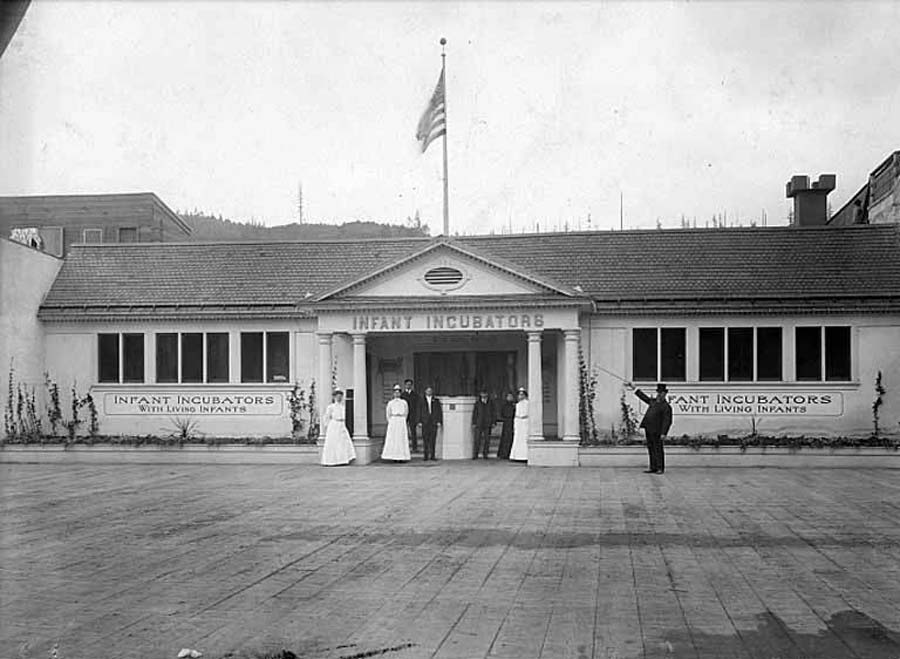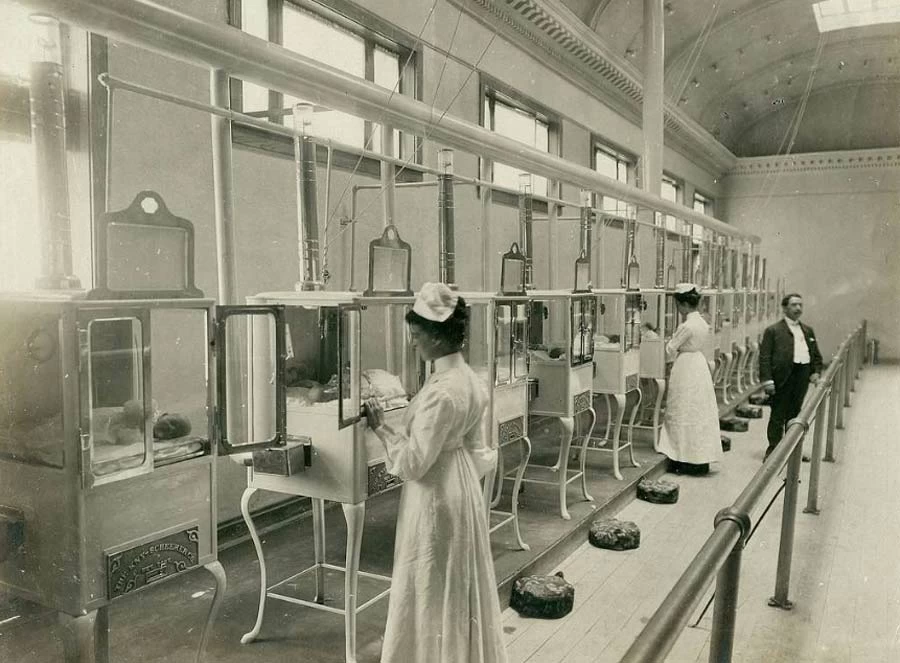Dr. Martin Couney was a “doctor” who created medical history by saving thousands of premature babies. Very little information is on record for this doctor, but what does remain shows he was worthy of admiration. Dr. Couney was born in the year 1869 in Prussia. His original name was Michael Cohen, which he changed when he emigrated to New York at the age of 18.
Couney didn’t have any recorded medical credentials, instead claiming that he was the protégé of a renowned French doctor named Pierre-Constant Budin. This French doctor had been made famous as the person who introduced incubators into Europe.
But there is no evidence of Couney’s claim. Regardless of whether he was from a medical background or had any medical credentials, he dedicated 40 years of his life towards helping premature babies.

He started his practice in New York and soon expanded to other cities and countries as well. As per the new book that has been written on him, named The Strange Case of Dr. Couney: How a Mysterious European Showman Saved Thousands of American Babies, by Dawn Raffel, Dr. Couney was responsible for saving between 6,500 or 7,000 lives over his lifetime.
What Motivated Martin Couney?
Dr. Couney always said that he was trying to raise awareness about premature babies, to convince the medical establishment that the correct treatment would result in many more surviving. But apart from that, he also wanted to ensure that the public could see the benefits of this treatment, and believe that their babies could be saved.
The methods that this doctor adapted were somewhat strange, even when compared to modern standards. But they did work and the lives of many premature babies were saved!
He used to put premature babies in his incubators on public display, and the public would pay a quarter to witness them battling life and death in those incubators. Even though these methods were unconventional, this was a critical source of funding for his work and Dr. Couney was the only person offering this life saving treatment.
Hospitals at that time didn’t have incubators for treating premature babies. On top of that there was a general lack of resources to help the babies, such as breast milk and nurses. The Americans believed that premature babies were some sort of social burden, and various medical journals referred to them as weaklings.
The professional doctors who should have been trying to save those babies, instead were quick to give up on them, considering them a lost cause. But Dr. Martin Couney was not among those doctors!
A Showman Doctor
Martin Couney gave himself the title of “doctor” to give himself and his work more authority. He was sure that he would get away with this title because there was no internet, no long-distance phones, and no resources to disprove his fake identity. In addition people evidently saw the results of his work in saving premature babies and were happy to believe he was a real doctor.

He was successful in saving a huge amount of premature babies in his lifetime. According to Dawn Raffel, Dr. Couney lived closely alongside those children, even after they were safely out of the incubators. He used to get invitations to birthday parties and even weddings of the babies whom he saved.
Martin Couney hired barkers to stand at his exhibit’s entrance and entice the general public. They used slogans such as “Don’t forget to see the babies!”. These slogans worked well, and people turned up to see those babies.
In the year 1922 Couney hired a young British actor as one of his barkers. His name was Archibald Leach, a name that he changed later to Cary Grant!
Many panicked and scared parents used to drop off their premature babies at Couney’s exhibit in the hope that Couney could save them. Hospitals would offer little hope to the parents that these babies could be saved, but Couney was on a mission!
Couney’s Remarkable New Approach
When a new baby arrived, they would be bathed, rubbed with alcohol, and swaddled tightly before being placed in an incubator. The temperature of the incubator was carefully decided, depending upon the patient’s condition.
- Plague Doctor: The Origin of the Venice Carnival Mask
- “Freak Shows”: P T Barnum and the Circus of Exploitation
All the babies who could suckle were taken upstairs with the help of a small elevator and were breastfed by some wet nurses. Any babies who couldn’t suckle were fed with the use of a funneled spoon.
Couney left no records for his life-saving efforts, but it is evident that he was not able to save every baby he took in. However, he claimed an 85% survival rate and it is certain that is efforts saved babies who would otherwise have died.
it is believed that most of the deaths of premature babies he took in were within a couple of days of receiving them. Therefore, he made a statement that if a baby lives for seven days within the incubator, under Couney’s charge, they were not going to die!
The Ignorance of the Medical Establishment
Couney’s success in helping premature babies drew attention to tragedies in the wider medical world as well. St. Louis had planned an incubator exhibit in their 1904 World’s Fair, but the organizers did not invite Couney to the exhibit.

Instead, they went for the lowest bidder, whose name was Joseph Hardy. He was fully ignorant about caring for premature babies but was licensed with medical credentials.
After the exhibit was open for quite some time, Humane Society Examination did a survey and learned that 39 babies have died, out of 43 who were taken care of within the incubators. Couney then published an open letter, in the New York Evening Journal, by titling it as “The Crime of the Decade.”
Conclusion
Couney died in 1950 at the ripe old age of 80. He had closed his exhibit of incubators and premature babies 7 years before his death, in 1943. What he did was a testament to his dedication to help premature babies and give them new life. It also highlighted how the medical establishment failed to help those babies who could have been saved.
By Bipin Dimri
Top Image: Martin Coney holding two premature infants. Source: The New York Public Library